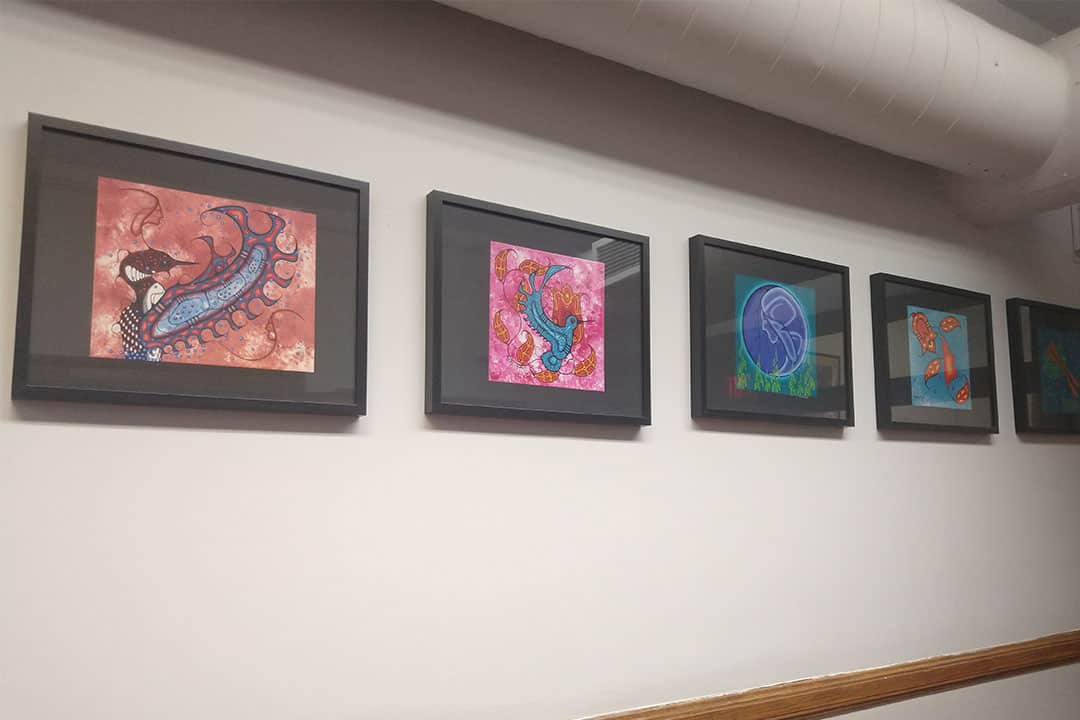Content warning: This article mentions residential schools.
During the week of October 30, the University of Toronto Students’ Union (UTSU) hosted its annual eXpression Against Oppression (XAO) week — a week of events to educate students and invite them into discussions about resisting oppression at U of T and beyond.
One of the events featured a screening of Stateless, a documentary from a Black Canadian filmmaker about systemic anti-Black racism and violence against people of Haitian descent in the Dominican Republic. The UTSU also hosted a Black Lives Matter forum on how to create informed social change for racialized communities.
On October 31, the union also collaborated with the Native Canadian Centre of Toronto (NCCT) to organize a guided tour of the NCCT, which is located north of the university on Spadina Road. Students learned about the NCCT’s community events, community and youth programming, Indigenous art, and gift shop for Indigenous-made goods.
Art and healing
The tour began on the front steps of the building, where tour guide Charlie Chaboyer met a small group of participants who had commuted from the Student Commons earlier that day. Chaboyer, who additionally identified himself as Fire Turtle Man, is a member of Rainy River First Nations in Manitoba.
Chaboyer gathered the group around a firepit whose cover showed a medicine wheel — a circular symbol and conceptual framework used by many Indigenous groups across North America that emphasizes interconnectedness and the need for balance between all aspects of life. Chaboyer talked about different interpretations of the medicine wheel, and how they could be employed to talk about individual healing journeys. He also explained how the Centre uses the fire as a space to mourn community members.
Chaboyer talked about his own experience as a third-generation residential school survivor. “We were taught not to unite. Don’t feel, don’t trust, don’t talk. And I think it’s about time we feel that conversation, we love that conversation, and we accept that conversation… all that is healing,” he said in an interview with The Varsity.
Chaboyer emphasized the importance of events like this one, where participants could talk about their own perspectives. He discussed the importance of exploring the effects of residential schools in depth and how spaces like the Centre can contribute. “What are we doing about it today? Talking about it. We go from early on. The other day I talked to grade six, I talked to six-year-olds, I talked to nine-year-olds, I talked to our age. It’s been passed on,” he said.
The Centre’s programming
The group toured the NCCT and learned about all the services it offers.
The Centre’s main hall hosts many community events, such as cultural nights every Tuesday and Wednesday from 6:00–8:00 pm and Okichitaw combat arts classes. It’s also where the Centre will host its Indigenous Artisan Market on the weekends of November 24, December 1, and December 8.
Chaboyer encourages people to attend NCCT events: “People come to this lovely place, and they say, ‘Am I welcome? Can I buy a dreamcatcher? Am I doing it right?’” That hesitance to engage with Indigenous spaces, he explains, is often fed by the “outside ripple” effects of large traumas like those that come from residential schools. Still, he hopes people visit the Centre: “Why is our doormat there?” he quipped.
The Centre also boasts a large art collection. Since its founding in 1962, Indigenous artists, friends, and collectors have donated art to the Centre. The group viewed and discussed a painting by Maxine Noel — an internationally acclaimed Santee Oglala Sioux artist with expertise in many media.
The Centre runs programming for young kids, including programming to teach children Indigenous languages, and programs for new parents in Toronto to find community in the city.
According to NCCT’s councillor-in-residence, its youth drop-in centre, designed for Indigenous youth 12–24, usually boasts an attendance of up to over a dozen people a day. Indigenous youth can access cultural programming, sharing circles, one-on-one counselling, medicines, recreational outings, and land-based outings such as ice fishing, medicine walks, and tending to Indigenous gardens in the city.
Case managers are also available at the Centre to give Indigenous adults emotional or social support, or support in navigating bureaucratic or health systems.
Chaboyer believes spaces like the Centre are important for healing and community-building: “It’s a safe space here. An honest space here. A respectful space here. This building has trust — you can’t have a relationship without trust.”



No comments to display.